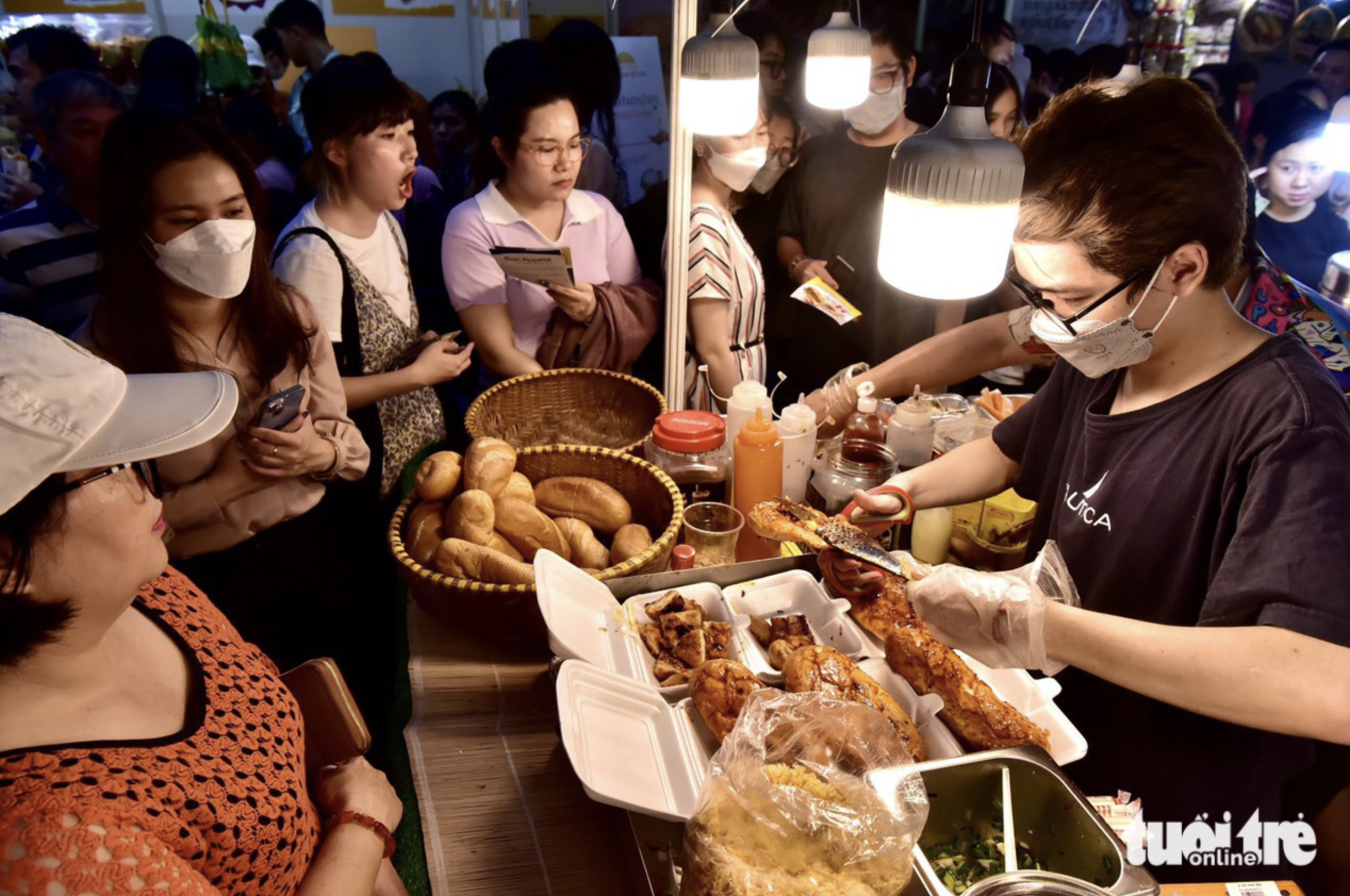Pham Dang Dinh was the first person of the Pham Dang Family who left his native province in Quang Ngai Province to settle down in Go Cong. Here, he taught the local people and reclaimed new lands for expanding the area.
It was said that on a rainy and windy night, a strange guest came to Dinh’s family to ask for dinner and overnight stay. Being a kind-hearted and hospitable person, Dinh treated the guest to a hearty meal. The guest was so moved by the kindness of Dinh that he told Dinh that he was a geomancer and was looking for a good layer of earth. He also told Dinh about Go Rua – a mound in the shape of a tortoise shell that had a good geographical location and added that if Dinh buried his father on the mound, his descendants would enjoy great benefits. Believing what the guest said, Dinh asked his son, Pham Dang Long, to return to Quang Ngai to take the ashes of Dinh’s father, Pham Dang Tien, to bury on the mound. In 1796, Pham Dang Hung, a grandchild of Dinh, successfully passed the Tam Truong examination in Gia Dinh and then became a mandarin who was famous nationwide for his uprightness. He held many important positions, including Inspector of the Huong (regional) Examination in the North (1807) and Minister of Rites (1813). He is father of Queen Mother Tu Du, wife of King Thieu Tri who was famous for not only contributing to governing the country and giving the people a comfortable life, but also a virtuous woman who knew how to teach the children well.
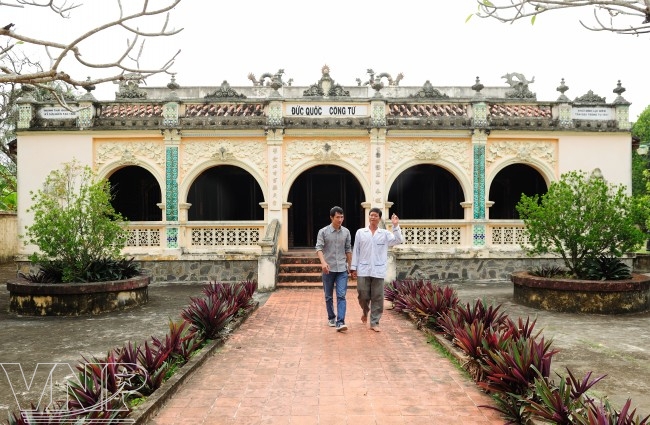 The worshipping house of Grand Duke Pham Dang Hung was once the residence place of Queen Mother Tu Du when she was small.
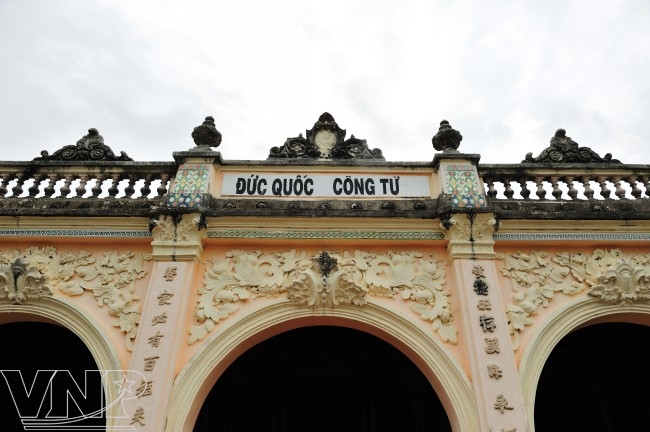 The worshipping house has arches decorated with flowers and leaves in the western architectural style that is combined with Chinese parallels in the oriental architectural style. 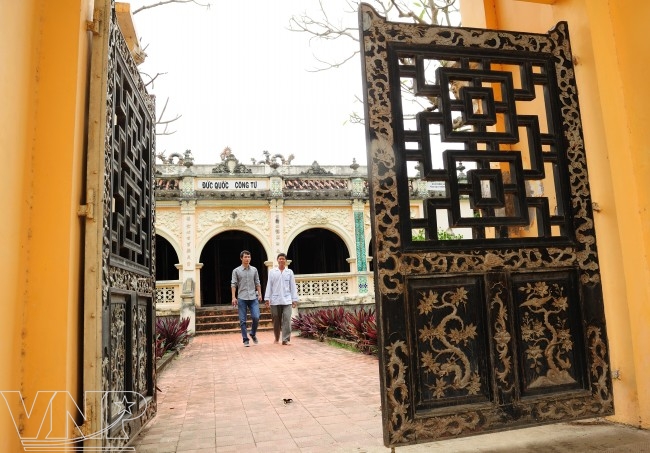 The imposing wooden gate shows the position of the head of the family.
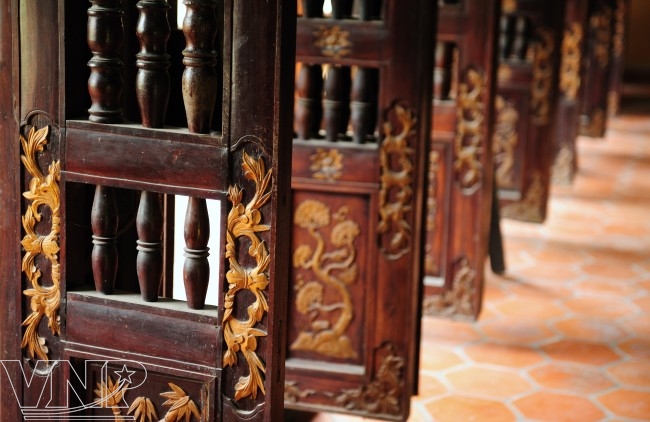 The worshipping house has doors made from precious timbers in the traditional Hue architectural style.
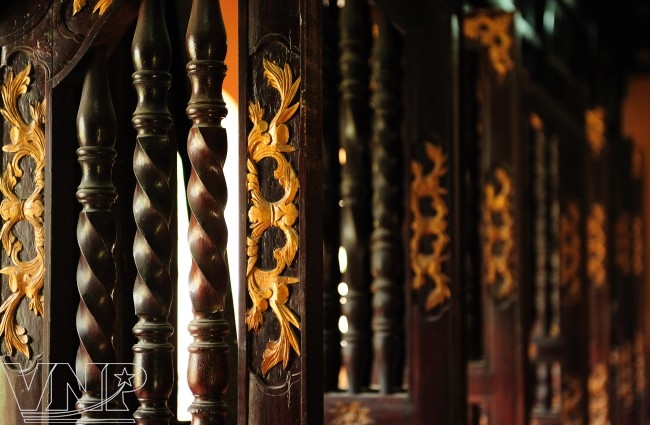 Carved images and a row of delicate handrails on each gate.
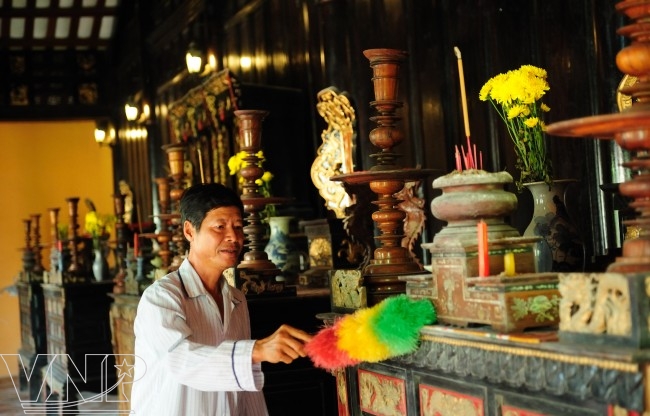 In the middle of the worshiping house is the altar of members of the Pham Dang Family.
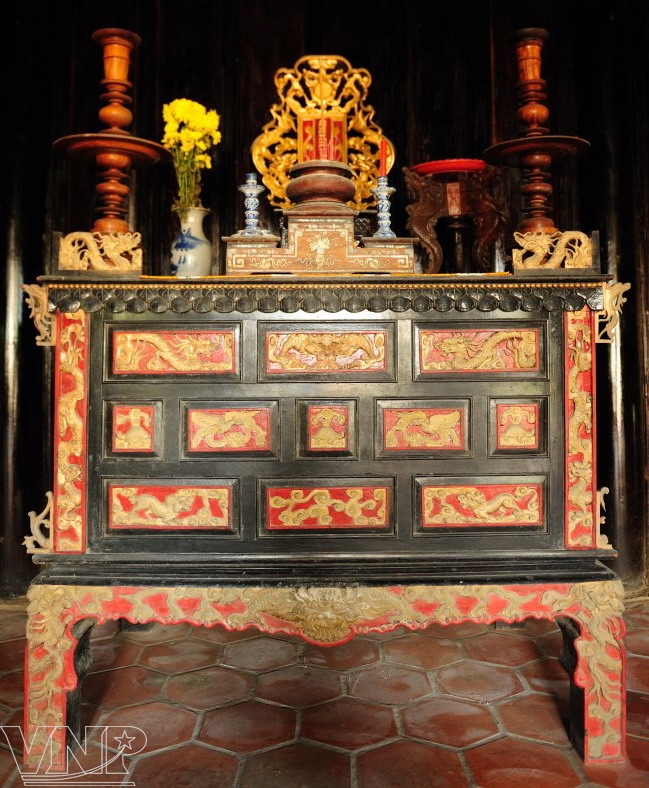 The altar of Grand Duke Pham Dang Hung is placed in the middle of the house that looks like the altars of the Nguyen Kings in The Mieu in Hue Imperial Palace. 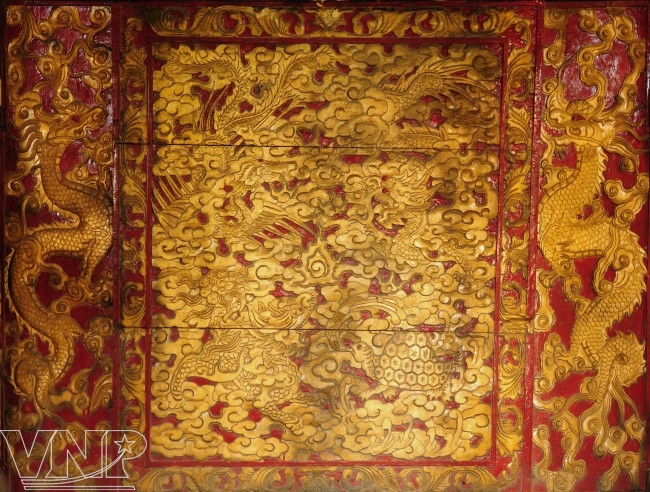 The carved images of “Dragon, Unicorn, Tortoise and Phoenix” on the altar of Grand Duke Pham Dang Hung are imbued with royal artistic features. 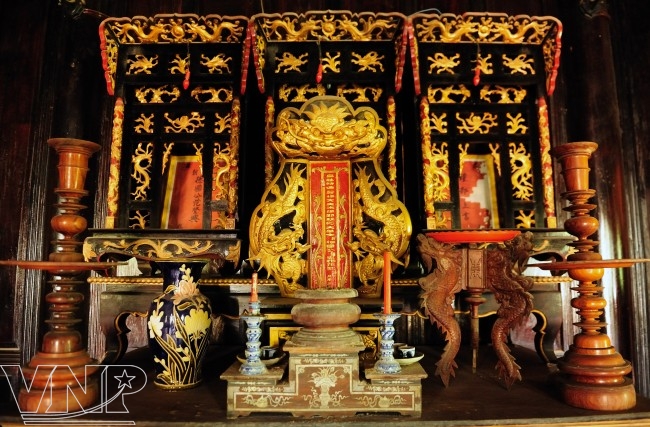 Ancient ancestral tablets on the altar. 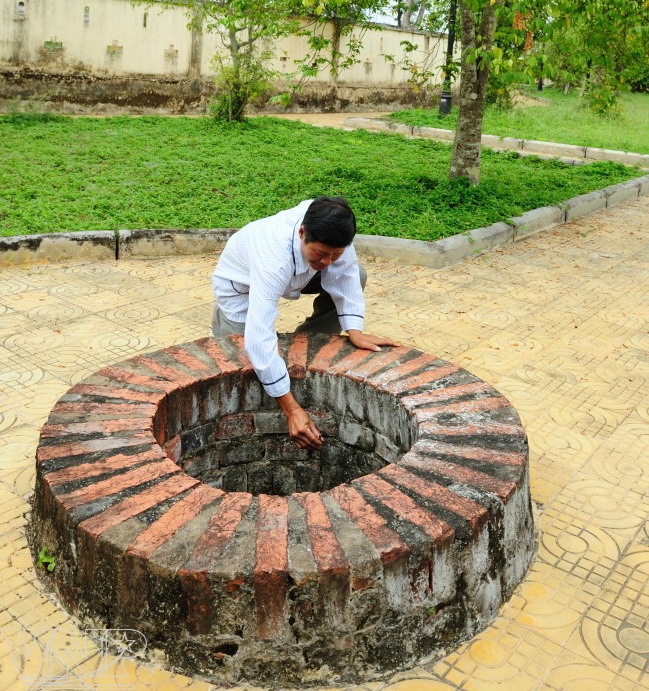 An ancient well built with wooden-hammer bricks in the precinct of Hoang Gia Tomb Complex.
|
In 1825, Grand Duke Pham Dang Hung died and his eldest son ordered a large tomb complex built on Go Rua in 1826. Many talented and skilled artisans who specialized in building tombs and imperial palaces from Hue and neighbouring localities were invited to research, design and build the complex.
At present, the complex of tombs is preserved intact. It consists of a worshipping house covered with green trees all year round that is dedicated to Grand Duke Pham Dang Hung. Here, Queen Mother Tu Du lived during her childhood before she moved to live in the Hue Royal Palace at the age of 14. The worshipping house was built with bricks in the architectural style of residence buildings of noblemen in the South and royal palaces in Hue. It has a system of pillars and beams made from precious timbers that are skillfully carved with the themes of “Eight Weapons”, “Four Sacred Animals” and “Four Seasons” imbued with oriental features. In the precinct of the architectural work, there is an ancient well built with wooden-hammer bricks. In the dry season, the whole area of Go Cong is encroached by the sea so the water resource here is salty. However, the water in the well is fresh all year round.
Besides the worshipping house, there is the tomb of Grand Duke Pham Dang Hung. It was built in the shape of a court bonnet. Seen from a distance, it looks like a large urn. It is a strange and unique architectural style. It was decorated with sophisticated and delicate patterns like dragons, tigers, carps crossing over Vu Mon (Rain Gate), leaves and flowers. On the tomb stands a large white stone stele presented by King Tu Duc. The stele was inscribed with an epitaph written by Phan Thanh Gian and Truong Quoc Dung in the 10th Tu Duc Year (1857) to praise the merit of Grand Duke Pham Dang Hung. After 130 years of being lost due to wars, it was found and replaced on the tomb. As the legend goes, Grand Duke Pham Dang Hung was buried in sitting posture in a two-layered coffin.
On December 2, 1992, the Royal Mausoleums was recognized as a national historical and cultural relic by the Ministry of Culture, Sports and Tourism.
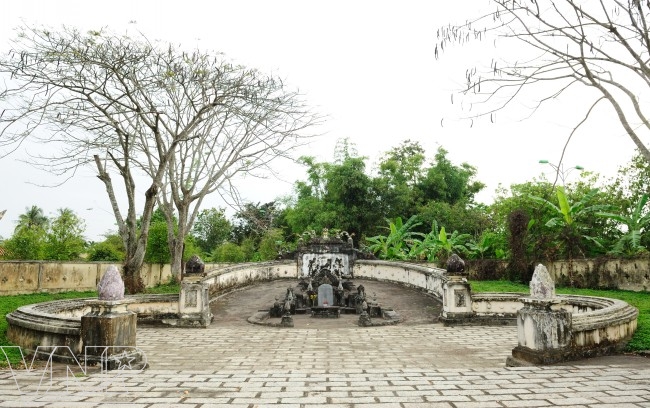 The tomb of Grand Duke Pham Dang Hung looks like a hat of court dress.  Legendary, the corpse of Grand Duke Pham Dang Hung has been buried in sitting posture in the tomb. 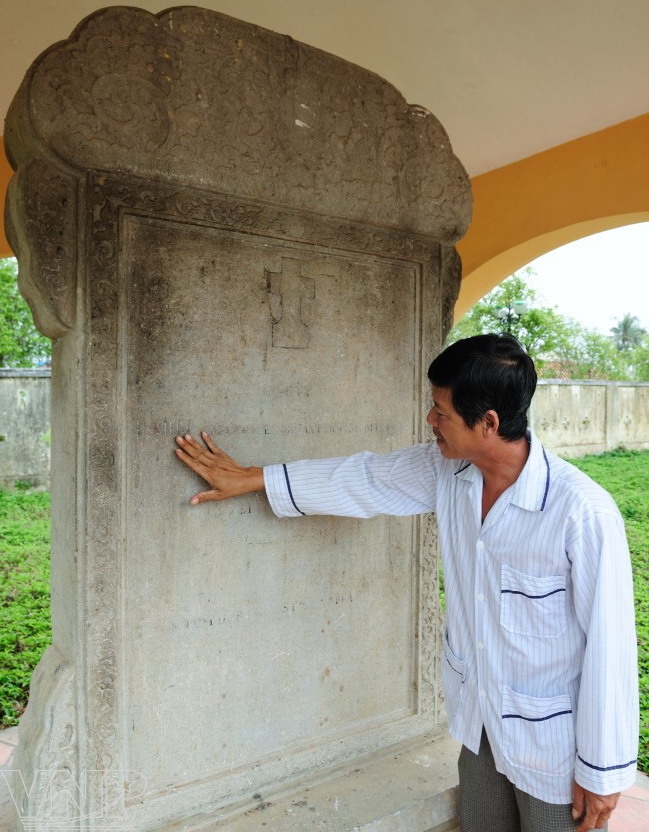 After 130 years of being lost, the stele presented by King Tu Duc is found and replaced on the tomb. |



